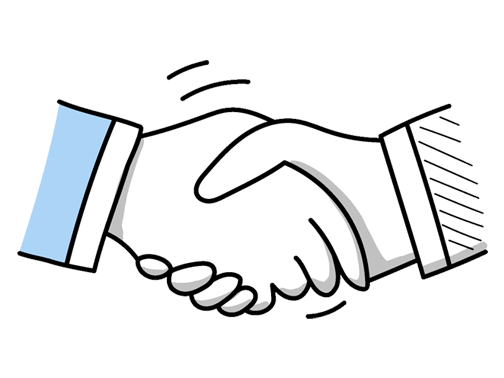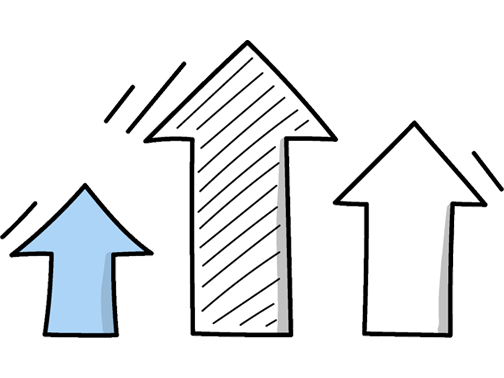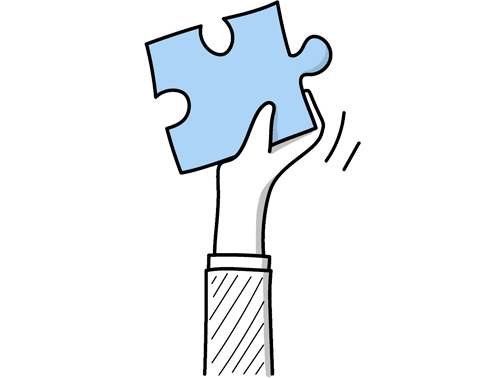Buying Director Interview Questions (2025 Guide)
Find out common Buying Director questions, how to answer, and tips for your next job interview
Practice Interviews Online - Identify your strengths and weakness in a realistic Buying Director mock interview, under 10 minutes
Practice Now »Buying Director Interview Questions
Questions like this assess your commitment to continuous learning and your awareness of market trends, which are crucial for making informed purchasing decisions. You need to explain that you regularly follow industry news, attend key events, and actively network to stay updated on developments.
Example: I make it a point to regularly read key industry publications and attend trade shows to catch the latest trends firsthand. I also stay connected with suppliers and peers through informal chats and networking events, which often provide insights you won’t find online. This combination helps me anticipate changes and adapt our buying strategy effectively. For example, last year, a supplier conversation alerted me to a shift in consumer preferences before it became widely known.
This question assesses your ability to balance financial limits with business goals, showing strategic thinking and resourcefulness. You need to explain how you prioritize spending, negotiate effectively, and find creative solutions to maximize value within budget.
Example: Managing budget constraints means being both strategic and flexible. I focus on building strong supplier relationships to negotiate better deals and prioritize products that offer the best value and appeal to customers. For example, in my last role, I adjusted order volumes and timing to take advantage of seasonal discounts, ensuring targets were met without overspending. It’s about balancing cost with quality to keep both the business and customers satisfied.
This question assesses your leadership skills in maintaining team motivation and productivity. You need to explain how you set clear goals, create a positive environment, and support your team's growth through regular feedback, recognition, and training.
Example: I keep my team motivated by setting clear, achievable targets that everyone understands, which helps us stay focused and accountable. I also encourage open communication and celebrate successes to maintain a positive atmosphere. Investing time in their development—for example, through tailored training or mentoring—ensures they feel valued and see a clear path for growth, which naturally boosts both morale and productivity.
Questions like this assess your awareness of the market and how you apply that knowledge to your buying strategy. You need to highlight key trends like sustainable sourcing and supply chain shifts, and explain how you adapt decisions while keeping an eye on competitors and consumer behavior.
Example: In today’s market, there’s a clear move towards sustainability and ethical sourcing, which really shapes buying choices. Consumers are more informed and expect transparency, so aligning with that is key. At the same time, technology like AI helps predict trends and streamline procurement. Keeping an eye on competitors adopting these tools ensures we stay competitive while meeting evolving customer demands.
This interview question is designed to see if you understand how your buying decisions impact the broader business objectives and if you can adapt your strategy based on market insights and company goals. In your answer, clearly connect your buying strategy to revenue or market growth, describe how you analyze trends and customer needs, and mention how you track key metrics to evaluate success.
Example: To ensure the buying strategy supports the broader business goals, I start by clearly understanding the company’s priorities, whether that’s growth, margin improvement, or innovation. I regularly review market trends and sales data, adjusting our purchasing to stay aligned. For example, at my last role, shifting focus to sustainable products directly backed our brand’s green commitment, which boosted customer loyalty and sales while reflecting our core values.
What they want to understand is how you recognize and nurture potential in your team to drive growth and success. You need to describe a specific situation where you identified someone's strengths and helped them improve through coaching or opportunities, showing measurable results.
Example: In my previous role, I identified team members’ strengths and encouraged them to lead projects that stretched their skills. For example, I supported a junior buyer by involving them in supplier negotiations, providing guidance along the way. This hands-on approach boosted their confidence and performance, which eventually led to their promotion. Developing talent is about creating opportunities and trusting people to grow through real experience.
This interview question helps the employer understand how you ensure the suppliers you work with are financially stable and reliable. You need to say that you evaluate financial statements for profitability and liquidity, check credit ratings and payment history, and analyze market trends that might affect the supplier’s stability.
Example: When assessing a supplier’s financial health, I usually start by reviewing their financial reports to understand how well they’re doing in terms of profits and cash flow. I also look into their track record with payments to ensure they’re dependable. On top of that, I consider their position in the market and any external challenges they might face, like economic shifts, which could affect their stability over time.
Questions like this assess your ability to manage suppliers effectively by using measurable criteria and data to ensure consistent performance and mitigate risks. You should explain that you use clear metrics like delivery timeliness, quality, and cost, analyze performance data to identify improvements, and maintain ongoing communication to strengthen supplier relationships.
Example: When evaluating suppliers, I combine regular performance reviews with key metrics like delivery times, quality, and cost. I use this data to identify areas for improvement and have open conversations to strengthen relationships. For example, by tracking on-time delivery trends, I worked with one vendor to streamline their process, which improved reliability and benefited both sides in the long run. It’s about partnership and continuous improvement.
Interviewers ask this to assess your decision-making and organizational skills under pressure. You need to explain that you evaluate projects based on impact, deadlines, and resource availability, then communicate your process clearly to show strategic prioritization.
Example: When faced with competing projects, I start by assessing each one’s impact on business goals and timelines. I engage with my team to understand dependencies and resource availability, which helps in making informed decisions. For example, prioritizing a high-demand product launch over routine stock replenishment ensures we capture market opportunities without compromising day-to-day operations. This approach balances urgency with strategic value to keep everything on track.
Hiring managers ask this question to assess your strategic thinking and ability to plan effectively before negotiations. You need to explain that you research the market, understand both parties' needs, and set clear goals to create win-win outcomes.
Example: When preparing for a negotiation, I focus on understanding both our needs and the other party’s priorities. I gather detailed market insights and analyse past deals to identify opportunities and potential challenges. For example, in a recent contract discussion, knowing the supplier’s constraints helped me propose solutions that benefited both sides, leading to a stronger partnership and better terms for us. It’s about being well-informed and flexible.
What they want to understand is how you manage disagreements to maintain team productivity and morale. You need to explain that you listen to all sides objectively, encourage open communication, and work collaboratively to find a solution that aligns with the team's goals.
Example: When conflicts arise, I focus on open communication and understanding each perspective. Recently, two team members disagreed on supplier terms, so I brought them together to discuss their concerns calmly. By encouraging honest dialogue and finding common ground, we reached a solution that everyone supported. This approach builds trust and keeps the team focused on our shared goals.
What they want to understand is how you handle setbacks and adapt under pressure during important negotiations. You need to briefly describe the negotiation context and goals, explain the unexpected challenges you faced and how you adjusted your strategy, then share the outcome and key lessons you took away to perform better next time.
Example: In a recent negotiation with a key supplier, we aimed to secure better pricing on a new product line. Midway, unexpected budget cuts created tension around cost expectations. I shifted focus to emphasizing long-term partnership benefits and flexible payment terms, which helped bridge the gap. Though the initial targets weren’t met, we established trust and found a compromise that set the stage for smoother talks in the future.
Questions like this assess your awareness of current trends and your ability to apply innovation to your role. You need to mention a specific innovation, explain why it’s exciting, and relate it to how it can improve buying strategies or outcomes.
Example: One innovation I find really interesting is the rise of AI-driven demand forecasting. It allows buyers to anticipate trends and manage stock much more efficiently, reducing waste and improving availability. For example, some retailers are now using AI tools to analyze customer behaviour in real-time, which helps tailor purchasing decisions quickly. This not only boosts profitability but also enhances the customer experience by ensuring popular products are always in stock.
This question gauges your ability to proactively identify and manage risks that could impact strategic goals. You need to explain how you analyze market trends to foresee risks, implement measures like supplier diversification to mitigate them, and continuously review risks to adapt your purchasing strategies accordingly.
Example: When approaching risk in strategic planning, I start by pinpointing potential challenges early on and evaluating their impact. From there, I focus on making informed decisions that either reduce exposure or create flexible options, like diversifying suppliers to avoid disruptions. Integrating these considerations from the outset ensures the plan remains resilient over time and aligns with our broader business goals.
What they want to understand is how you lead effectively by recognizing individual team needs and adjusting your approach accordingly. You need to explain your leadership style clearly and give a brief example of adapting it to motivate or support different team members.
Example: I believe in leading with clarity and trust, tailoring my approach to each person’s strengths and motivations. Some team members thrive with detailed guidance, while others do best with autonomy. For example, when working with a new buyer, I provide structure and close support, but with experienced colleagues, I focus on empowering their decisions. It’s about understanding who they are and adjusting to bring out the best in everyone.
Interviewers ask this to see how you handle tough financial decisions and apply analytical thinking under pressure. In your answer, clearly explain the challenging situation, how you used data to evaluate options, and the positive results or lessons you gained.
Example: In a previous role, I had to decide whether to continue purchasing from a long-term supplier who suddenly raised prices. I analysed sales data, market trends, and alternative vendors to weigh the impact on margins. Ultimately, I negotiated a better deal while diversifying our supplier base, which improved costs and reduced risk. This experience taught me the value of balancing data-driven insights with relationship management under financial pressure.
Hiring managers ask this question to see how you approach complex discussions and achieve win-win outcomes. You need to describe a specific negotiation, focus on your role in finding common ground, and highlight clear communication and results.
Example: In a recent negotiation with a key supplier, I focused on building a strong relationship and understanding their priorities as much as ours. By finding common ground on delivery schedules and quality standards, we reached a deal that improved costs by 8% without compromising service. The success came from open communication and a willingness to find solutions that benefited both sides.
Questions like this assess your leadership skills and ability to manage change effectively. You need to explain the situation clearly and highlight how you communicated, motivated your team, and ensured a smooth transition.
Example: Certainly. When I led my team through a shift to a new procurement system, I focused on clear communication and support. I organised regular check-ins to address concerns and ensured everyone had the training they needed. This approach helped ease the transition and kept the team motivated, resulting in a smoother adoption and improved efficiency within a few months.
Questions like this assess your ability to use financial data to make smart purchasing choices that impact profitability and risk. You need to mention key metrics like margin analysis, sales data, cost analysis, and cash flow considerations to show you make informed, financially responsible decisions.
Example: When making buying decisions, I focus on metrics like gross margin to ensure profitability, inventory turnover to manage cash flow efficiently, and cost of goods sold to keep expenses in check. I also consider return on investment to assess long-term value and monitor any financial risks involved. For example, evaluating how a product affects overall margins helps balance risk while maximizing growth opportunities.
Employers ask this to assess your ability to anticipate changes that impact purchasing decisions and business growth. You need to explain that you combine data analysis, industry research, and customer insights to make informed forecasts.
Example: To forecast market trends and consumer demand, I blend data analysis with staying close to customer feedback and industry insights. I track sales patterns and competitor moves while also attending trade shows and engaging with suppliers to gauge shifts early. For example, noticing increased interest in sustainable products helped me adjust buying strategies ahead of demand, ensuring we stayed relevant and competitive.
Questions like this assess your ability to balance purchasing choices with the company’s profitability and budget constraints. You need to explain how you analyze cost, forecast ROI, and collaborate with finance to make informed decisions that support overall financial targets.
Example: I focus on understanding the company’s financial targets and use data to guide purchasing choices. For example, by analyzing past sales and supplier performance, I can negotiate better prices without compromising quality. This way, every buying decision supports profitability while keeping stock aligned with market demand, ensuring we meet both budget and growth objectives.
What they want to understand is how you handle uncertainty and still make decisions that benefit the company strategically. You need to explain how you analyzed the limited data, aligned your choice with business goals, and achieved a positive outcome while reflecting on what you learned.
Example: In a previous role, I had to select a new supplier with incomplete market data. Focusing on quality and delivery reliability aligned with our growth targets, I trusted vetted references and past performance indicators. The choice helped reduce costs and improved lead times. It reinforced the importance of balancing risk with strategic priorities and trusting experience when data isn’t complete.
What they want to understand is how you strategically manage cost and quality to achieve lasting value, showing you can negotiate effectively without sacrificing standards. In your answer, explain how you identify cost-saving opportunities while protecting quality, and describe how you build strong supplier relationships through clear communication and trust.
Example: Balancing cost savings with quality means truly understanding where value lies. I focus on negotiating smarter, not just cheaper, by collaborating closely with suppliers to find efficiencies that don’t sacrifice standards. For example, by reviewing materials or delivery schedules together, we’ve cut costs while keeping quality intact. Building trust encourages open dialogue, which helps us both meet financial goals without compromising what matters to our customers.
What they want to know is how you manage tough deals by preparing thoroughly, adapting as needed, and keeping communication clear and professional. You should explain that you research the other party's needs beforehand, stay flexible during discussions, and focus on building positive relationships even when challenges arise.
Example: When negotiations get tough, I focus on really understanding what both sides want and where there’s room to meet. I stay flexible, looking for creative solutions rather than sticking rigidly to one plan. Keeping communication open and respectful helps build trust, which often turns a difficult discussion into a positive outcome. For example, in a recent deal, listening carefully uncovered a hidden priority that allowed us both to walk away satisfied.
Interviewers ask this question to assess your awareness of industry shifts and your ability to anticipate and navigate future challenges. You need to show insight into trends like e-commerce growth and supply chain risks, and explain how you would strategically manage these changes while leading your team effectively.
Example: Over the next five years, the buying landscape will likely face shifts from rapid technological advances and changing consumer behaviours. Staying ahead means spotting new trends early—like the rise of sustainable sourcing—and being ready to pivot when supply chain disruptions occur. Leading through these changes will require a mix of strategic thinking and flexibility to turn challenges into opportunities that benefit both the business and customers.
Ace your next Buying Director interview with even more questions and answers
Common Interview Questions To Expect
The interviewer is looking for a candidate to demonstrate their qualifications, skills, experience, and passion for the role. Answers should highlight relevant achievements and how they align with the company's goals.
Example: Well, I have over 10 years of experience in the retail industry, specifically in buying and merchandising. I have a proven track record of increasing sales and profitability through strategic product selection and negotiation with suppliers. I am passionate about staying ahead of industry trends and driving business growth, which I believe aligns perfectly with the goals of your company.
The interviewer is looking for your commitment to ongoing learning and growth in your career. You can answer by discussing courses, certifications, conferences, or other ways you plan to stay current in your field.
Example: I'm always looking for ways to stay on top of industry trends and expand my knowledge. I plan on attending relevant conferences and workshops, as well as pursuing any certifications that can help me excel in my role as a Buying Director. Continuous learning is key to success in this fast-paced field.
The interviewer is looking for examples of how you have successfully collaborated with others, communicated effectively, and contributed to achieving team goals. Be prepared to discuss specific projects and outcomes.
Example: Sure! In my role as a Buying Director, I have worked closely with cross-functional teams to develop and execute strategic buying plans. I have effectively communicated with team members to ensure alignment on goals and timelines, resulting in successful product launches and increased sales. Overall, my experience working in a team has been instrumental in driving business growth and achieving targets.
The interviewer is looking for insight into your personal motivations, values, and work ethic. You can answer by discussing your passion for the industry, desire for growth, or commitment to achieving goals.
Example: What motivates me is my passion for the retail industry and the thrill of discovering new trends and products. I am driven by the opportunity for growth and the challenge of achieving ambitious goals. Ultimately, I am motivated by the satisfaction of seeing my hard work pay off in successful buying decisions.
The interviewer is looking for your level of interest in the company and role, as well as your critical thinking skills. You can ask about company culture, team dynamics, future projects, or any other relevant topics.
Example: Yes, I was wondering about the company's approach to sustainability and how that aligns with the products we source. Can you tell me more about the team I would be working with and how collaboration is encouraged? Also, I'm curious about any upcoming projects or initiatives that I could potentially be involved in.
Company Research Tips
The company's website is a goldmine of information. Look for details about the company's history, mission, vision, and values. Understand their product range, target market, and key competitors. As a Buying Director, you should be aware of the company's product portfolio and their sourcing strategies. Check for any recent news or press releases about the company. This can give you insights into their current focus and future plans.
Tip: Don't just stick to the 'About Us' page. Explore the entire website, including blogs and news sections. Look for any information about their suppliers and sourcing strategies.
Social media platforms can provide valuable insights into a company's culture, customer engagement, and market reputation. Platforms like LinkedIn can give you information about the company's size, location, and employee structure. Twitter and Facebook can provide insights into their customer engagement strategies. Instagram can give you a glimpse into their company culture and branding strategies.
Tip: Follow the company on social media platforms and engage with their posts. Look for any customer reviews or comments that can give you insights into their customer service and product quality.
Understanding the company's competitors can give you insights into the market dynamics and the company's positioning. Look for information about the competitors' product range, pricing strategies, and market share. This can help you understand the company's competitive advantage and potential challenges. As a Buying Director, understanding the competitive landscape can help you make better sourcing decisions.
Tip: Use tools like Google Trends, SEMrush, or SimilarWeb to get data about the competitors' online presence and market share. Look for any news or articles about the competitors.
Understanding the industry trends can help you understand the market dynamics and future opportunities. Look for information about the latest trends in sourcing and procurement. Understand the impact of factors like technology, sustainability, and globalization on the buying process. This can help you align your strategies with the industry trends and add value to the company.
Tip: Use resources like industry reports, market research studies, and trade publications to get information about the industry trends. Participate in industry forums and networking events to stay updated.
What to wear to an Buying Director interview
- Dark-coloured business suit
- White or light-coloured shirt
- Conservative tie
- Polished dress shoes
- Minimal jewellery
- Neat, professional hairstyle
- Light makeup for women
- Clean, trimmed fingernails
- Subtle, fresh scent perfume
- Carry a professional bag





